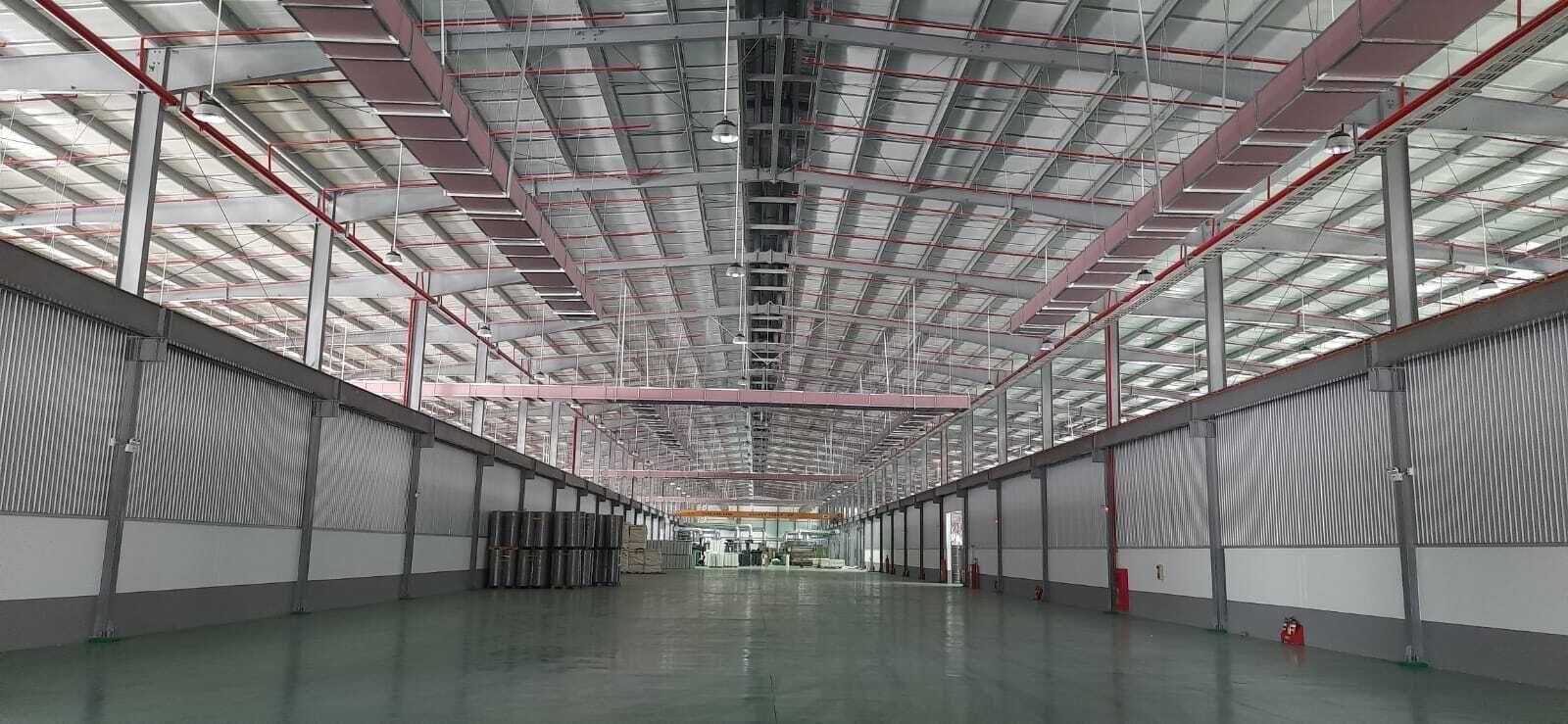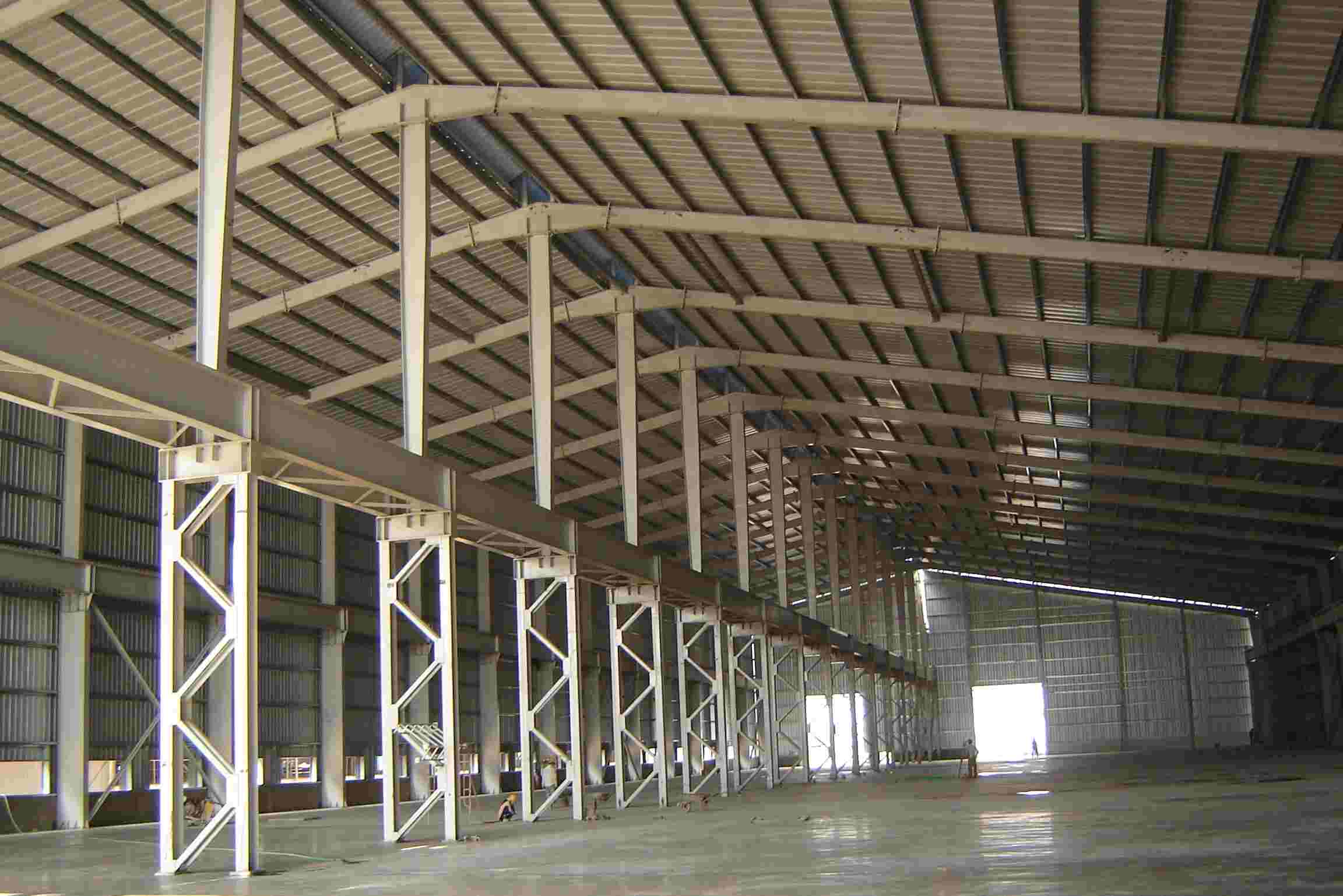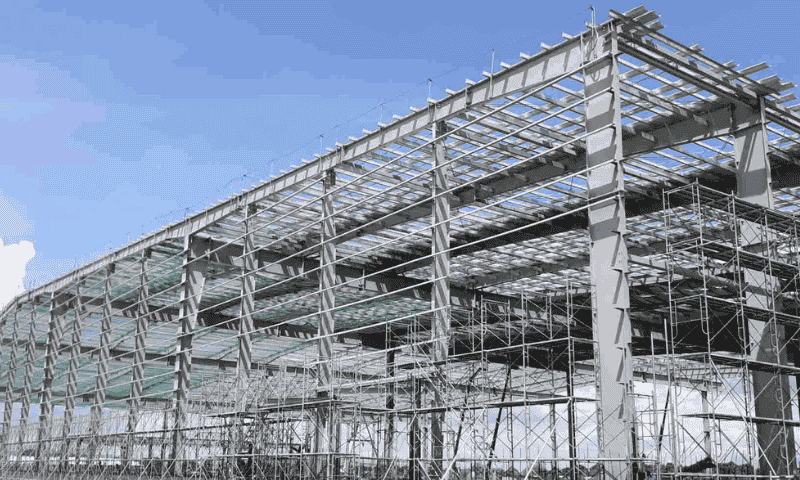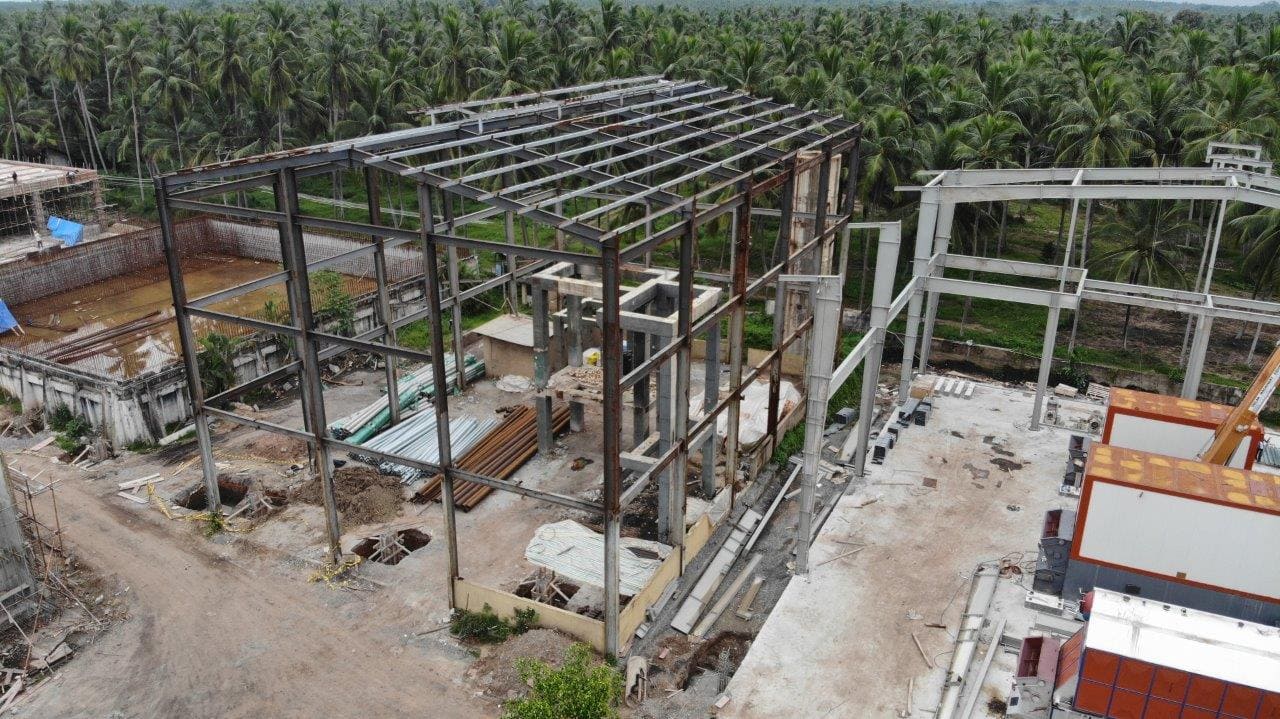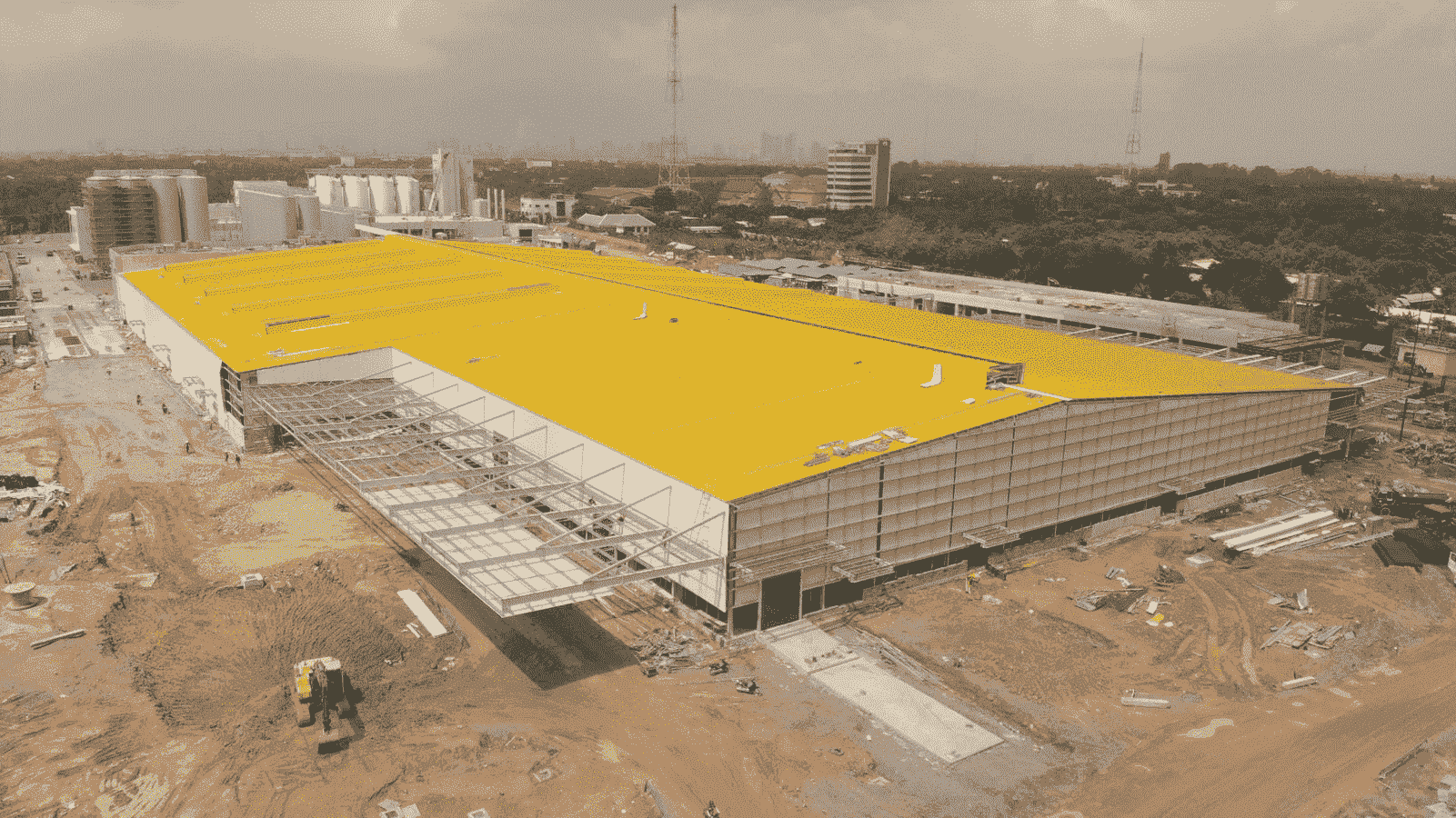The installation of electrical systems during the construction of pre-engineered warehouses and factories plays a vital role in overall project quality, especially when integrated with shed fabrication processes to ensure safety, accuracy, and effective long-term operations. The following article will provide you with a detailed process of electrical installation and the factors to consider:
1. Requirements of a stable electrical distribution system in warehouse construction
The electrical distribution system plays a crucial role in providing stable power for the production and business activities of a warehouse construction. To ensure safety, efficiency, and meet the increasing demand for usage, the electrical distribution system needs to meet the following requirements:
1.1 Reliability
- The system must operate continuously without interruption due to incidents, ensuring stable power supply to the warehouse.
- Ability to withstand grid electrical incidents, lightning strikes, overloads, etc.
- Sufficient backup power sources to ensure production operations during emergencies.
1.2 Power Quality
- The supplied voltage must be stable within permissible limits, ensuring normal operation of machinery and equipment.
- The frequency of electricity must be stable, with limited fluctuations to avoid affecting product quality.
- Minimize harmonic distortion, electrical noise to protect electronic devices.
1.3 Safety
- The system must be installed correctly, complying with electrical safety standards.
- Use high-quality electrical equipment with clear origins.
- Equip the system with complete lightning protection and fire prevention systems.
- Regularly inspect and maintain the electrical system to ensure safety.
1.4 Efficiency
- The system should be optimally designed to minimize energy waste.
- Use energy-saving devices.
- Implement efficient energy management solutions.
1.5 Scalability
- The system must be easily expandable to meet the increasing demands of the warehouse.
- Easy installation of additional equipment and machinery without affecting the overall system operation.
1.6 Economic viability
- The system should be constructed with reasonable and effective costs.
- Low operating and maintenance costs.
- Long service life.
- Additionally, the electrical distribution system needs to meet specific requirements of each warehouse, depending on the manufacturing industry, warehouse-scale, the number of machinery, equipment used, etc.
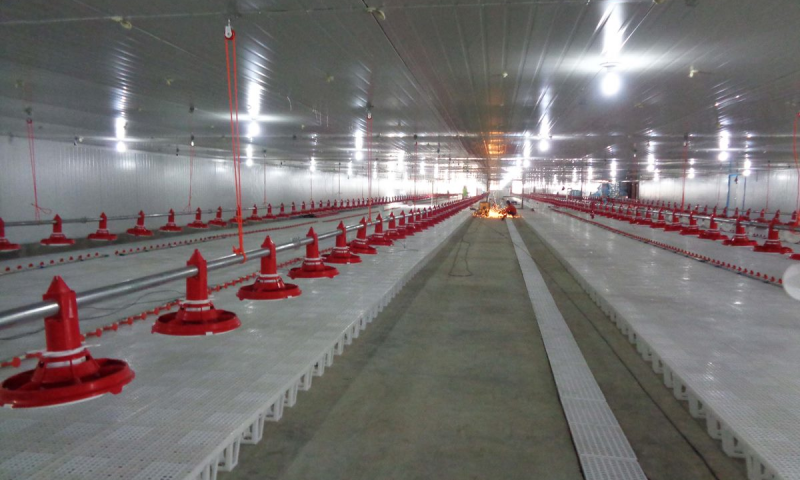
Requirements of a stable power distribution system in factory construction
2. Choosing suitable electrical components and equipment for factories, pre-engineered steel storage building
Choosing suitable electrical components and equipment in warehouses using steel structure design plays a crucial role in ensuring safety, efficiency, and optimizing the production and business activities of warehouses. Below are some factors to consider when selecting electrical components and equipment for warehouses:
2.1 Electrical usage requirements
Determine the total electrical power usage of the warehouse and, calculate the electricity demand for each area, workshop, machinery, equipment, etc.
Choose electrical equipment with appropriate power ratings to meet usage requirements, ensuring sufficient load for the electrical system.
2.2 Operating environment
Consider environmental factors such as humidity, temperature, dust, chemicals, etc., affecting the durability and operation of electrical equipment.
Choose electrical equipment with water-resistant, dust-resistant, chemical-resistant capabilities suitable for the operating environment.
2.3 Technical standards
Choose electrical equipment with clear origins, ensuring quality and safety according to national and international technical standards.
Prioritize the use of energy-saving electrical equipment to minimize operating costs.
2.4 Reputable brands
Select electrical equipment from reputable brands in the market, with good warranty policies and professional customer services.
Consult with electrical experts or contract electricians for advice on selecting suitable equipment.
2.5 Some types of electrical components and equipment suitable for warehouse construction include:
- Electrical cables: Electrical cables should have appropriate cross-sections for power usage, with high load-bearing capacity and good fire resistance.
- Electrical sockets: Choose electrical sockets capable of handling high loads, compatible with common plug types.
- Circuit breakers: Install circuit breakers for each area, workshop, machinery, equipment to protect the electrical system from overloads, short circuits.
- Electrical cabinets: Choose electrical cabinets with suitable sizes, ensuring safety and aesthetics.
- Lighting system: Use energy-efficient lighting systems such as LED lights, ensuring proper brightness for work and production.
- Lightning protection system: Install lightning protection systems to protect warehouses from the risk of lightning strikes.
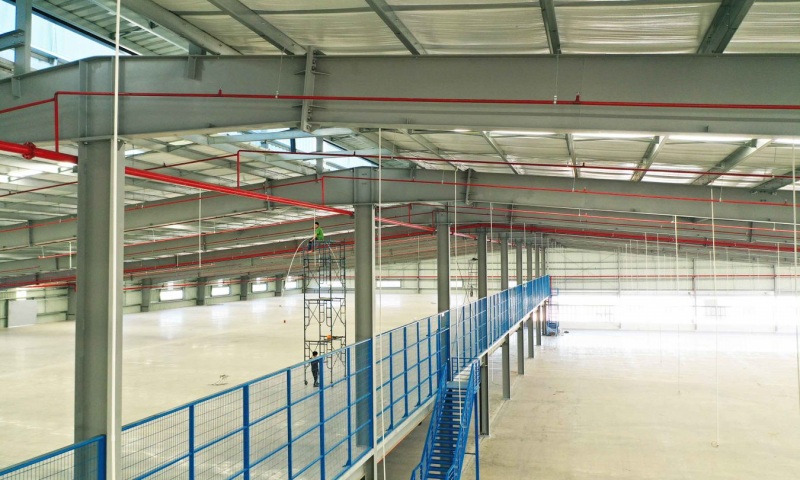
Select suitable components and electrical equipment for factories and prefabricated steel warehouses
3. Electrical distribution structure in warehouse construction
3.1 High-voltage distribution (HT):
High-voltage electricity is supplied from the national grid or auxiliary transformer stations. To ensure safety, it requires highly skilled electricians to install and operate due to the high voltage.
High-voltage electrical systems are often designed with multiple layers of protection to ensure safety and stability.
- Supplied from the national grid or auxiliary transformer stations.
- Supply electricity to the main transformer substations (MBA) of warehouses.
3.2 Medium-voltage distribution (MT):
Medium-voltage electricity is stepped down from high-voltage electricity through the main transformer substations (MBA). They supply electricity to medium-voltage distribution switchboards (MSB) in the warehouse.
Highly skilled electricians are also required to install and operate medium-voltage electrical systems.
- Stepped down from high-voltage electricity through the main transformer substations (MBA).
- Supply electricity to medium-voltage distribution switchboards (MSB).
3.3 Low-voltage distribution (LV):
Low-voltage electricity is stepped down from medium-voltage electricity through medium-voltage distribution switchboards (MSB). They supply electricity to electrical devices in the warehouse such as machinery, equipment, lighting systems, air conditioning systems, etc.
Low-voltage electrical systems need to be designed and installed to meet the usage requirements of each area in the warehouse.
- Stepped down from medium-voltage electricity through medium-voltage distribution switchboards (MSB).
- Supply electricity to electrical devices in the warehouse, such as machinery, equipment, lighting systems, air conditioning systems, etc.
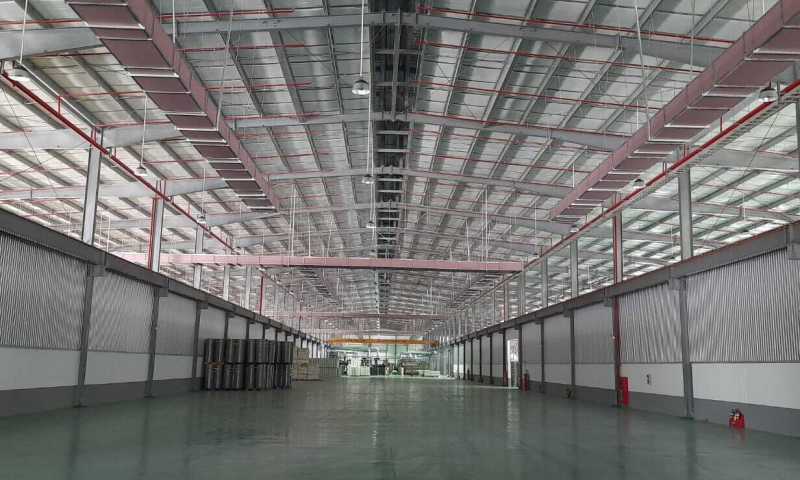
Power distribution structure when building factories
4. Detailed initial steps for electrical installation during warehouse construction
4.1. Site assessment
- Identify the location for installing the electrical system: This includes the positioning of electrical panels, transformers, wiring systems, outlets, switches, etc., suitable for the warehouse layout, ensuring convenience for operation, maintenance, and usage.
- Evaluate electricity usage needs: Determine the total electrical power usage of the warehouse, calculate electricity requirements for each area, section, machinery, equipment, etc. Create a load diagram for the entire warehouse.
- Identify influencing factors: Consider factors such as terrain conditions, climate, surrounding environment (temperature, humidity, dust, chemicals, etc.) affecting material and equipment selection and construction methods.
- Prepare electrical system drawings: Based on the site assessment results, create detailed drawings showing the location, size, technical specifications of electrical equipment, wiring systems, electrical panels, etc.
4.2. Electrical installation planning for warehouse construction
- Selecting electrical construction contractors: Search and select reputable contractors with experience in warehouse electrical system construction, ensuring quality, safety, and construction progress.
- Cost estimation: Based on the design drawings, calculate detailed costs for the electrical system, including materials, equipment, labor, construction, etc.
- Construction planning: Develop a detailed construction schedule for each phase, coordinate with the overall construction progress of the warehouse, ensuring safety and efficiency.
- Prepare materials, equipment: Choose materials, electrical equipment according to technical standards, with clear origin, ensuring quality and safety.
4.3. Obtain necessary permits and approvals
- Construction permit for electrical systems: As per the law, obtain a construction permit for electrical systems from the responsible state management agency.
- Approval of electrical system design: Submit electrical system design documents for review and approval by the competent authority before construction.
- Report construction progress: Regularly report the construction progress of the electrical system to the competent state management agency as required.
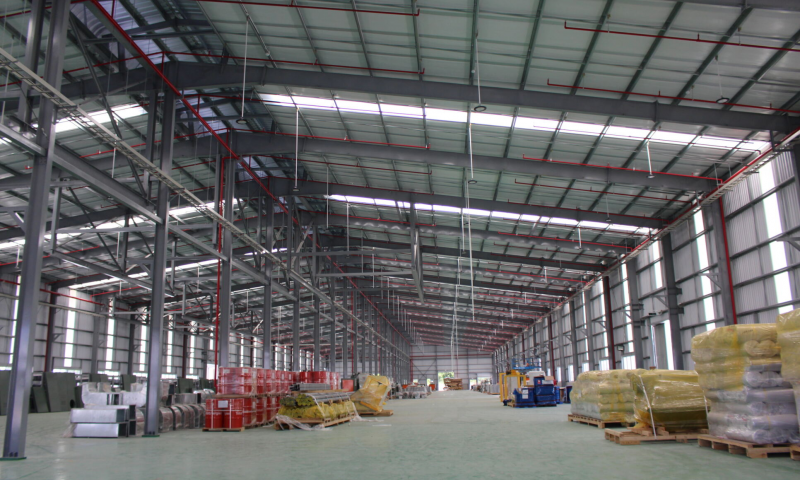
Details of the initial steps related to electrical installation in factory construction.
5. Detailed process of electrical installation in warehouse construction:
5.1. Phase 1: Preparation for electrical installation in warehouse construction
- Define requirements: Study the electrical design drawings, calculate power requirements, and determine the location for electrical equipment installation.
- Select contractors: Choose reputable electrical construction contractors with experience in warehouse electrical system construction, ensuring quality, safety, and construction progress.
- Prepare materials, equipment: Select materials, electrical equipment according to technical standards, with clear origin, ensuring quality and safety.
- Obtain a construction permit: In accordance with the law, obtain a construction permit from the responsible state management agency for the electrical system.
- Report construction progress: Regularly report construction progress of the electrical system to the competent state management agency as required.
5.2. Phase 2: Construction of warehouse
- Install wiring system:
- Install the main wiring system from the power source to the main electrical panel.
- Install branch wiring from the main electrical panel to various distribution panels.
- Install wiring to electrical devices such as outlets, switches, lighting fixtures, etc.
- Install electrical panels:
- Install the main electrical panel at the power source entrance to the warehouse.
- Install distribution panels in various areas, sections of the warehouse.
- Install electrical components in the electrical panels such as circuit breakers, switches, relays, etc.
- Install electrical devices:
- Install electrical outlets, switches at appropriate locations.
- Install lighting systems according to usage requirements.
- Install other electrical devices such as electric fans, air conditioners, etc.
- Check electrical system:
- Check the safety of the electrical system, ensure no electrical leaks, short circuits.
- Check the operation of electrical devices, ensure normal operation.
5.3. Phase 3: Acceptance and handover
- Acceptance of electrical system:
- Inspect the electrical system according to procedures, technical standards.
- Prepare an acceptance report for the electrical system.
- Handover the electrical system:
- Hand over the electrical system to the investor according to the acceptance report.
- Guide the investor on how to use and maintain the electrical system.

Procedures for applying for electrical installation permit in factory construction
6. Notes in the process of electrical installation in warehouse construction
6.1. Before electrical installation in warehouse construction
- Detailed planning: Develop detailed plans for time, construction progress, labor assignment, necessary materials, and equipment for each item.
- Ensure labor safety: Provide full personal protective equipment for construction workers such as insulated gloves, helmets, safety glasses, etc.
- Prepare construction site: Clean up the construction site, ensure flat, clean surfaces, and make it convenient for construction.
- Check existing electrical system (if any): Thoroughly inspect the existing electrical system (if any) to detect and rectify any faults before proceeding with new construction.
6.2. During electrical installation in warehouse construction
- Comply with electrical safety regulations: Strictly comply with electrical safety regulations during construction, ensuring safety for people and property.
- Correct technical installation: Install electrical equipment correctly, ensuring accuracy and safety.
- Thoroughly check connections: Thoroughly inspect electrical connections to ensure no electrical leaks, short circuits.
- Use high-quality materials, equipment: Use high-quality electrical materials, equipment with clear origins, ensuring durability and safety.
- Maintain cleanliness of construction area: Maintain cleanliness of the construction area, tidy up materials, and equipment after use.
6.3. After the electrical installation in warehouse construction
- Overall check of the electrical system: Check the overall electrical system after construction, ensure safe and efficient operation.
- Prepare acceptance report: Prepare an acceptance report for the electrical system as required.
- Hand over the electrical system to the investor: Hand over the electrical system to the investor according to the acceptance report.
- Guide the investor on how to use and maintain the electrical system: Guide the investor on how to safely and efficiently use and maintain the electrical system.
Additionally, some points to note:
- Use electrical wiring systems with good insulation, suitable for the warehouse environment.
- Install lightning protection systems to protect warehouses from the risk of lightning strikes.
- Install fire alarm systems to detect incidents promptly.
- Regularly inspect and maintain the electrical system to ensure safe and efficient operation.
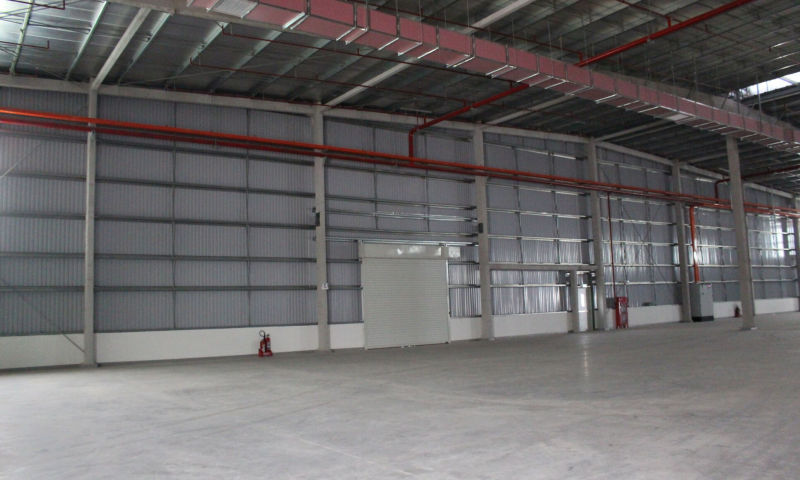
Key points to consider in the electrical installation process in the construction of factories and warehouses.
With the electrical installation process in warehouse construction presented in this article, it is hoped that you have gained useful knowledge for accurate and effective construction. Additionally, you should also seek advice from electrical experts for specific recommendations on the most suitable construction solutions. If clients are looking for comprehensive solutions for Pre-engineered Buildings and Steel Structure, please contact Pebsteel via email at marketing@pebsteel.com.vn or hotline:(+84) 908 883 531 for advice today.
*** This article is intended to provide general information about the pre-engineered steel building and steel structure industry only. For further details or clarification based on your needs, please contact Pebsteel directly.






